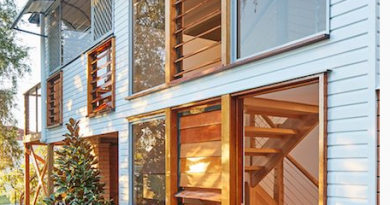Hybrid Flooring: The Ultimate Guide to Choosing and Installing the Perfect Floor
Are you in search of a flooring option that combines the best features of different materials, is easy to maintain, and adds value to your home? Look no further! Hybrid flooring is the answer to all your flooring needs. In this comprehensive guide, we will delve into the world of hybrid flooring, discussing its features, benefits, installation process, and maintenance tips. By the end of this article, you will have all the information you need to make an informed decision about whether hybrid flooring is the right choice for your home.
What is Hybrid Flooring?
Hybrid flooring is a revolutionary flooring option that combines the best features of laminate, vinyl, and hardwood flooring. It is made up of multiple layers, including a rigid core made from limestone and PVC, a decorative layer that mimics the look of wood or stone, and a protective wear layer on top. This unique composition gives hybrid flooring its durability, waterproof properties, and realistic appearance.
Benefits of Hybrid Flooring
There are several benefits to choosing hybrid flooring for your home, including:
Waterproof: Hybrid flooring is 100% waterproof, making it an ideal choice for bathrooms, kitchens, and other areas prone to moisture and spills.
Durability: The rigid core and protective wear layer make hybrid flooring resistant to scratches, dents, and stains, ensuring your floor stays looking new for years to come.
Realistic Appearance: Thanks to advanced printing technology, hybrid flooring can closely mimic the look of natural wood or stone, giving your home a luxurious feel without the high price tag.
Easy Maintenance: Hybrid flooring is easy to clean and requires minimal maintenance, making it a hassle-free choice for busy households.
Comfort: The rigid core provides a comfortable underfoot feel, while also reducing noise and providing excellent insulation.
Easy Installation: Hybrid flooring can be installed quickly and easily, even over existing floors, saving you time and money on your renovation project.
Comparing Hybrid Flooring to Other Flooring Options
When comparing hybrid flooring to other flooring options, it’s essential to consider factors such as cost, durability, appearance, and maintenance requirements. Here’s how hybrid flooring stacks up against some popular flooring choices:
Vinyl Plank Flooring: While both hybrid and vinyl plank flooring are waterproof and durable, hybrid flooring has a more rigid core, providing better stability and comfort underfoot.
Laminate Flooring: Hybrid flooring offers the same realistic appearance as laminate but is waterproof, making it a better choice for areas prone to moisture.
Hardwood Flooring: While hardwood flooring is a timeless option, it can be expensive and requires regular maintenance. Hybrid flooring provides a similar look at a lower cost and with less maintenance.
Choosing the Right Hybrid Flooring for Your Home

When selecting the perfect hybrid flooring for your home, consider the following factors:
Room Usage: Consider the room’s purpose and foot traffic when selecting a hybrid flooring option. High-traffic areas may require a more durable product, while bedrooms and living spaces may benefit from a softer, more comfortable option.
Hybrid flooring comes in a wide range of colors, patterns, and textures, so you can find the perfect match for your home’s aesthetic.
Budget: Hybrid flooring is available at various price points, so you can find an option that fits your budget without sacrificing quality.
Preparing for Your Hybrid Flooring Installation
Before installing your hybrid flooring, take the following steps to ensure a smooth and successful installation process:
Remove existing flooring: If you are installing hybrid flooring over an existing floor, be sure to remove any old flooring materials and thoroughly clean the subfloor.
Measure and order materials: Measure the square footage of the room and order the appropriate amount of flooring, along with any necessary underlayment, trim, and transition pieces.
Acclimate the flooring: Allow the flooring to acclimate to the room’s temperature and humidity for at least 48 hours before installation.
Hybrid Flooring Installation Process
Hybrid flooring can be installed using a floating or glue-down method. The floating method involves clicking the planks together and laying them over an underlayment, while the glue-down method requires adhesive to secure the planks to the subfloor. Be sure to follow the manufacturer’s instructions for the specific product you have chosen.
Maintaining Your Hybrid Flooring
To keep your hybrid flooring looking its best, follow these maintenance tips:
- Sweep or vacuum regularly to remove dirt and debris.
- Clean spills promptly to prevent staining.
- Use a damp mop and a gentle cleaning solution for regular cleaning.
- Avoid using harsh chemicals or abrasive cleaning tools, which can damage the floor’s surface.
- Use protective pads on furniture legs to prevent scratches and dents.
- Place rugs or mats in high-traffic areas to protect the floor from wear.
Conclusion
Hybrid flooring is an innovative and versatile flooring option that offers the best features of laminate, vinyl, and hardwood flooring. With its waterproof properties, durability, realistic appearance, and easy maintenance, hybrid flooring is an excellent choice for any room in your home. By considering factors such as room usage, design preferences, and budget, you can find the perfect hybrid flooring option to enhance your living space. So, go ahead and take the plunge into the world of hybrid flooring – you won’t be disappointed!




